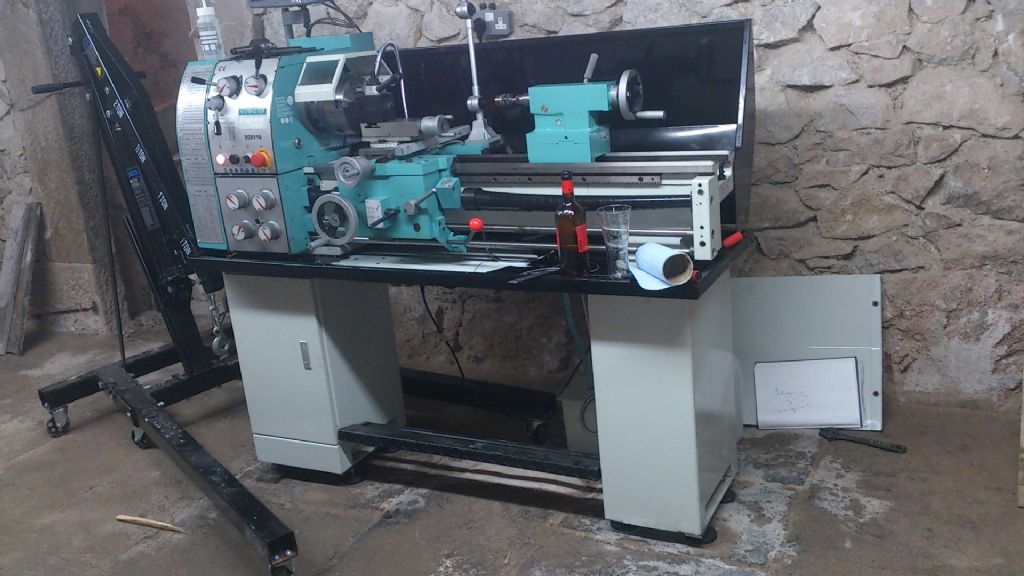Hi Robin,
Sorry to be so long replying. Have not looked at this thread for some time.
A lathe will have a Vee on one side, with a flat way on the other for the Saddle and/or tailstock.
(Mine has one Vee/Flat for the Saddle, and another, as a mirror image for the Tailstock).
A Lathe with flat bedways provides lateral location for the Saddle and Tailstock against the shears (vertical sideface )of the bed. So any wear will mean that the Saddle and Tailstock can move across the bed, and so become off centre, affecting alignment, accuracy and cutting action.
Adjusting the gib strips should remove slackness, but the Tailstock would need to be readjusted to ensure that its centre line is on that of the bed and Headstock.
The problem here, is that often the bed wears near the Headstock where the Saddle runs for a lot of the time. So removing clearance here will mean that the saddle is tight, possibly unacceptably so, at the Tailstock end of the bed.
A Vee bedway, provides lateral location, so any wear should keep the lateral alignment, but will allow the Saddle or Tailstock to sink below the centreline of the Headstock. On the Saddle, the tool height can be adjusted so no great problem there.
If the Tailstock wear puts it below the centre height, parallel turning , between centres will be affected.
The tool might be on centre height at the Headstock end but will effectively rise above it as the Tailstock end is approached, causing the tool to lose clearance and rub rather than to cut.
Nowadays, many lathes are advertised as having Induction Hardened Bedways, to minimise the risk of wear.
Whilst, as amateurs, we try to be precise, as we make our our one or two offs (certainly low volume), we rarely have the need for the level of repeated and consistent precision that is required in commercial mass production to ensure interchangeability. Consequently, we can live with, and adapt to a slight degree of wear in a machine.
If the underside of the Saddle or Tailstock wear, with flat bedways, the underside can be machined, and a wearplate fitted to restore things to the original level, (possibly even compensating for some wear in the bedway).
With a Vee bedway machine, repair is not quite so straightforward.
Not that I am advocating using worn, or in need of adjustment, machines, rather the reverse, that we should try, wherever possible, to eliminate or prevent wear.
What is acceptable depends upon what level of precision and accuracy is the goal, and the availability of machinery to make it. In the days of James Watt, a cylinder bore within 1/16 of an inch was probably considered good. Today, for Fuel Injection Equipment, we are looking at one or two microns!
Howard
Robin Graham.





